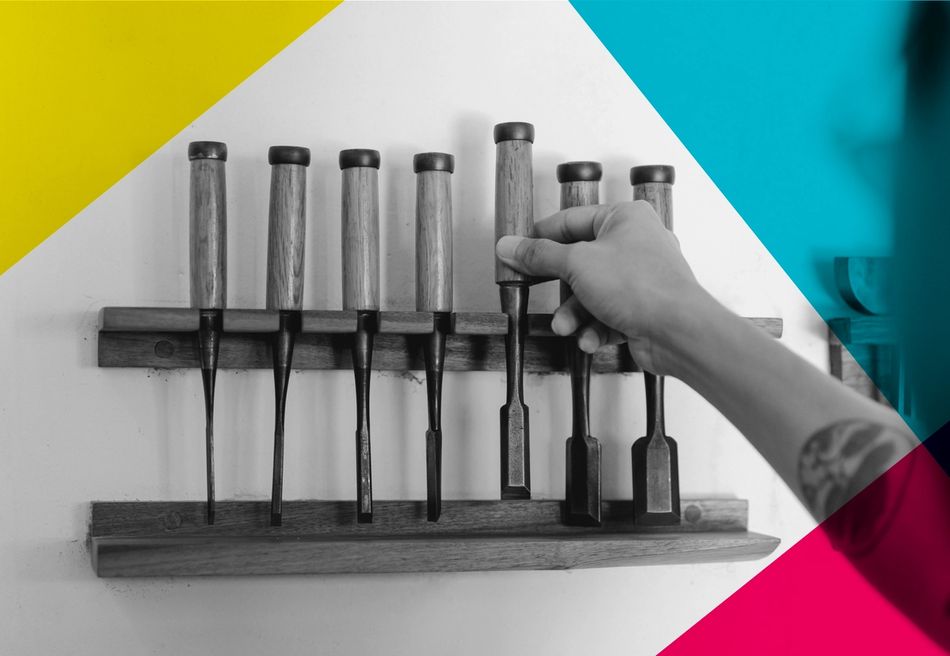
Table of contents
Whether your team already has a standup meeting habit or you’re just getting started, finding the right tool can make a big difference.
The best daily standup tool for your team is Range.co.
With its async check-ins, your team will be done in 5 minutes rather than 50. Better yet, you can all check in at your own time, which is great for teams working hybrid or remote in several time zones.
⭐️ How much are standups costing you? 🤷
⚡️ Use the Standup Cost Calculator & figure it out.
Keep reading to learn why Range is the best, along with a few other picks.
We’ll also share a few tips for thinking through the right way to run your standup, regardless of the tool.
And, if you’re not familiar with standups, no sweat — check out our complete guide to standups.
What are the best daily standup tools?
1. Range
Replace your daily standups with a fast async check-in from Range.It takes only 5 minutes.
Range is used by teams at SeatGeek, Hubspot NewRelic, and many more.
- Shift to async communication so you have fewer meetings
- Create a written record of the 3 core standup questions
- Customize your prompts and check-ins if needed
- Integrate tools from across your workflow, including Github, Google Docs, Google calendar, and more
- Add tasks from your project management tools
- Log team progress and accomplishments
- Identify blockers
- Uses team building questions to build trust
- Offers goals and meetings to round out your team communication and productivity
Range - has integrations with dozens of popular apps —Jira, Asana, GitHub, Notion, Google Drive, and Zapier; plus, it’s got a Chrome extension that lets you add any page on the internet to your standup update.
Range will help your team plan and share daily work so that everyone remains in sync and aware of what’s happening.
Pricing:
- Free: Up to 12 users
- Standard: $8 per user
- Premium: Enhanced security features. Contact Range to start.
⭐️ Save time on your standups.
⚡️Start an async standup with Range.
2. Geekbot
Geekbot is a Slackbot that helps remotes teams do their daily standup within Slack or Teams with quick prompts. The Slack-centric nature is convenient but can be limiting--such as customizing your questions and prompts. One key feature is the AI-reporting, which will show you sentiment and mood behind the answers.
Pricing:
- Free: Up to 10 users
- Scale: $2.50 per user/month
3. Slack
Many teams run their standups in Slack, with a channel dedicated to what they're working on that day. This is an easy solution for teams to do async standups, but they lack context and other project management integrations.
However, this becomes more difficult as you add more teammates. Slack, much like email, can get noisy fast without easy ways to sort through the responses.
⭐️ All info from Range can be shared in specific channels, with an easy-to-access history in Range.
⚡️Share your standup in Slack with Range.
4. Standuply
Another great option for standups is Standuply. It's in the name. And with Standuply, you can facilitate automatic, recurring and surveys in Slack. Pick out the integrations that you suit you best, such as Jira, GitHub, and other agile software. Billed as an "agile assistant," Standuply will create an internal Q&A system to help answer your team's most common questions.
Pricing:
- Starter: Free up to 3 users
- Team: $2.5 per user/month
- Business: $4 per user/month
5. StatusHero
Take a normal standup and create insights within an easy-to-use reports. Use graphs to visualize productivity and efficiency. Like Range, StatusHero offers mood tracking to check in on your team, and uses hashtags for categorization.
Pricing:
- Basic: $3 per user/month
- Pro: $5 per user/month
- Corporate: $7 per user/month
6. Microsoft Teams
Much like Slack, your teams can share their status updates or standups via a channel in Microsoft Teams. This can be helpful especially if you use many of the Microsoft productivity tools, such as OneDrive, To Do, or Outlook.
Much of your work may already be in these tools so you can comment on that work and plan ahead, after your standup meeting.
You can also centralize any work you use beyond Microsoft 365 with Range.
⭐️ All info from your standup can be shared in specific channels, with an easy-to-access history in Range.
⚡️Share your standup in MS Teams with Range.
7. Google Meet & Zoom
You can do a standup with the typical questions in a live video setting. Google Meet is free and is built into any Google Workspace. The drawback is that you have to attend in person (synchronously) with no automated written record. You'll also lose the sentiment history and integrations that many of the other tools like Range have.
Using video for standups
Async standups help teams document what happened and share information easily, but some teams miss the live connection of speaking in-person or over video.
If that’s the case, it can be useful to run some standups asynchronously and some over video, or find tools that pair the two formats together. Here are our recommendations:
- Zoom, Google Meet, and Microsoft Teams - If you don’t want any async component, the default video tools work great
- Range - Supports async check-ins and meeting facilitation over Zoom or Google Meet
- Standuply - Allows for short video messages that you can share asynchronously
Types of teams best suited for standup tools with video
Teams on the same schedule
If everyone works the same hours on your team, having a video standup or collaboration time can be a good moment to connect.
Small teams
For small teams, video can be a great way to connect. As the team grows, it’s useful to have some async or written component.
Teams with few meetings
When standups are the only meeting you have all day, it can feel like the only time to connect. If that’s the case with your team, it’s useful to incorporate video at least a few days a week.
Which standup tool is right for you?
Writing a standup from scratch can feel like replicating your task list from Jira or Asana or even your personal to-do list. That feeling grows the more tools your team uses.
Which integrations do you need? Standup tools that leverage integrations make it easy for teammates to plan their day across tools and improve information sharing by automatically sharing links to work you are doing in other tools.
What about tasks across collaboration tools?
If your team has tasks across tools — from Jira to Asana to personal to-do lists — then integrations will be especially important for your standup tool choice.
What about additional context?
To share context during stand-ups, team members often need to link out to other work. This can get tedious quickly, but tools with integrations make the process easy and lightweight.
How about cross-functional teams?
Those who work across teams often have to quickly switch context. Finding information on a specific project becomes easier when standups have deep links to other tools where context lives.
Attending multiple standups gets old fast. If your team is cross-functional, you want them to be able to get the information they need across multiple standups.
What about remote teams?
Some teams do a daily stand-up all at the same time. However, for distributed teams, 9am for one teammate might be 11pm for another.
In that case, asynchronous standup meetings may be a better bet, and it’s helpful to have a stand up app to support this habit — i.e., the team gets to share (and read) updates for the standup at a time that works for them.
How do you build culture?
While the original scrum meeting was focused just on work, daily standup meetings also help provide a sense of connection for teams, especially if they’re remote or don’t always work together day-to-day like a design team.
In that case, it’s important to find a tool that incorporates team building in some way—whether that’s async or over video.
Have multiple work streams in flight?
If every teammate is working on more than one project, then it’s important that your standup tool allows you to break updates apart based on project or goal. Otherwise, you’ll spend extra time just making sense of what’s happening.
Can standups help fast growing teams?
As you onboard new teammates, the standup meeting is a key time where they’ll get to know the rest of the team, so making sure you focus on getting to know each other can help make onboarding easier.
How do you handle alignment struggles?
The scrum standup meeting is intended to quickly identify blockers and next steps. But some teams also use it to do a bit of planning (pulling up a Jira epic) or to make sure everyone is focused on the right work. To do that, it’s really helpful if your tool has integrations and connects to goals.
Deciding what tool to use with your team is really about deciding what’s most important for your team in the long term. There are always a few growing pains as you adopt a new tool, so make sure to try out whichever tool you select for at least a few weeks.








